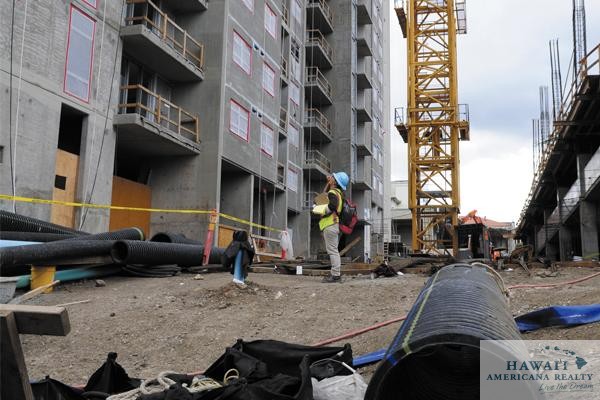Howard Hughes challenges HCDA over conditions for 42-story Kakaako tower
Howard Hughes challenges HCDA over conditions for 42-story Kakaako tower The Howard Hughes Corp. is challenging the state agency regulating development in the Honolulu neighborhood of Kakaako regarding conditions the agency set for the approval of its newest mixed-use high-rise residential project within its 60-acre Ward Village master-planned community, public documents show. Earlier this month, […]
Alexander & Baldwin has spent $9.5M so far on evaluating potential move to become a real estate investment trust
Alexander & Baldwin has spent $9.5M so far on evaluating potential move to become a real estate investment trust Alexander & Baldwin Inc. has spent $9.5 million on its evaluation efforts that will be used to decided whether to become a real estate investment trust or not, according to public documents filed Wednesday. Chris Benjamin, […]
Hawaii has lowest real property tax, WalletHub report says
Hawaii has lowest real property tax, WalletHub report says Hawaii has the lowest real property tax in the United States with a rate of 0.27 percent, according to a report by WalletHub. According to the report, Hawaii’s annual taxes on a $178,600 home is $487, 8.6 times lower than in New Jersey, the state with […]
Honolulu cool when it comes to house flipping
Honolulu cool when it comes to house flipping Honolulu, where the median price of a single-family home rose 5 percent last year, was one of the coolest spots in the U.S. for house flipping in 2016, when compared with other metropolitan areas. According to new research from Trulia, a combination of rising home prices and […]
Lawsuit claims developers of North Shore subdivision owe past dues to association
Lawsuit claims developers of North Shore subdivision owe past dues to association The family who developed The Bluffs at Waimea, a 25-lot residential subdivision on Oahu’s North Shore overlooking the famed Waimea Bay, is being sued by the subdivision’s community association for allegedly not paying association dues, according to court documents. The subdivision includes two […]
Facebook CEO reconsiders effort in Kauai land action
Facebook CEO reconsiders effort in Kauai land action Facebook CEO Mark Zuckerberg said Tuesday that he is reconsidering his effort to gain “quiet title” from hundreds of fractional owners of small pieces of land, or kuleana lands, within his 700 acres of oceanfront land he owns on the island of Kauai’s North Shore. Zuckerberg said […]
YES, LOCALS LIVE IN KAKAAKO
WITH ALL THE TALK OF $20 MILLION PENTHO– USES AND OFFSHORE INVESTORS PARKING THEIR MONEY IN KAKAAKO CONDOS, IT’S EASY TO BUY INTO THE WATER COOLER CHATTER THAT HONOLULU’S URBAN CORE ISN’T ATTAINABLE FOR LOCAL FAMILIES. Count the cranes popping up along or near Ala Moana Boulevard and check out Howard Hughes’ interactive model of […]
Hawaii agency chief says 35% of Kakaako’s housing units ‘affordable’

A little more than one-third of the more than 4,200 units being developed in the growing Honolulu neighborhood of Kakaako are not being built for the ultra-rich, the head of the Hawaii agency overseeing the redevelopment of the area said Wednesday. With scores of high-end condominiums being built in Kakaako, much of the talk has […]
Kakaako has infrastructure for condos, mayor says

Kakaako has the necessary infrastructure to handle more than 20 new high-rise condominium towers and the retail development that will surround them, Honolulu Mayor Kirk Caldwell says. Caldwell made his assurances during a groundbreaking for the Waiea condominium tower at Ward Village last weekend. He said about $300 million has been invested in infrastructure improvements […]
Former Kaneohe Ranch CEO D’Olier turns attention to Honolulu’s Kakaako neighborhood

Former Kaneohe Ranch CEO D’Olier turns attention to Honolulu’s Kakaako neighborhood Duane Shimogawa Reporter – Pacific Business News Former Kaneohe Ranch CEO Mitch D’Olier has turned his attention from the Windward side of Oahu to Honolulu, with his take on the island’s so called “Third City” of Kakaako. D’Olier, who stepped down from his position […]
